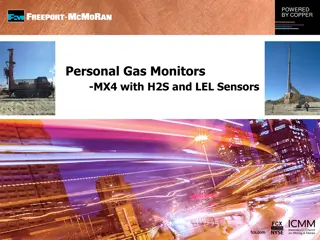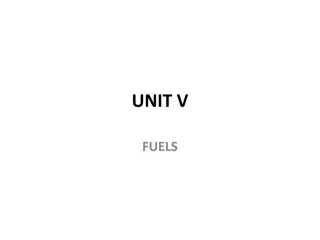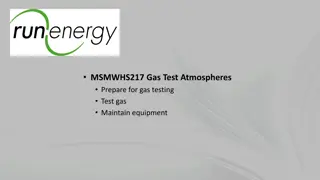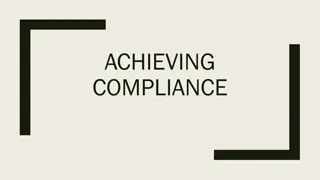Understanding LEL Monitors and Gas Safety in Industrial Settings
A detailed explanation of LEL (Lower Explosive Limit) monitors and their importance in detecting combustible gases to prevent explosions in industrial environments. Learn how LEL monitors work, their role in ensuring safety, and the significance of regular testing for gas monitors to safeguard perso
4 views • 14 slides
Biogas Production and Methane Content Measurement in Biodigester Research
Explore the process of collecting data in biodigester studies, focusing on biogas production, methane content, and related measurements. Learn how to read water levels, measure biogas, and assess methane content using sodium hydroxide or potassium hydroxide solutions. Practice techniques with fermen
0 views • 20 slides
Gas Chromatography Detectors: Flame Ionization and Thermal Conductivity
Gas chromatography detectors play a crucial role in separating and analyzing compounds in the pharmaceutical field. The Flame Ionization Detector (FID) utilizes hydrogen flame to ionize compounds eluted from the column, while the Thermal Conductivity Detector (TCD) principle involves converting elec
0 views • 13 slides
General Lab Safety Rules and Guidelines
Ensure 100% accuracy in identifying and adhering to general lab safety rules. Key points include reporting all injuries, wearing eye protection, maintaining safety zones around machines, disposing of combustible materials properly, obtaining permission before using equipment, and recognizing broken
0 views • 12 slides
Understanding Fuels and Their Classification
Fuels are combustible substances that serve as a source of heat or raw material for various industries. They can be classified as natural or artificial, solid, liquid, or gaseous, and primary or secondary fuels. Primary fuels like coal and wood are directly used for heat, while secondary fuels are m
4 views • 88 slides
Stove Fire Safety Tips and Recommendations
Providing a hearth at the base of the stove, maintaining sufficient space from combustible materials, ensuring proper ventilation, installing smoke and carbon monoxide detectors, and regular cleaning of the flue/chimney are essential practices to prevent fire hazards when using a stove. Timber surro
0 views • 5 slides
Understanding ISO Building Classifications for Insurance Rating
The ISO building classification system has been a cornerstone for insurance rating factors for over a century, categorizing buildings into six classes based on construction type. Learn about Frame Construction, Joisted Masonry, and Non-Combustible structures, their characteristics, and how they impa
0 views • 15 slides
Gas Testing and Hazardous Atmospheres: Preparation and Safety Guidelines
In environments with potential hazards, it is crucial to prepare for gas testing to ensure safety. This involves identifying the type of gas or atmosphere to be tested, understanding common gases, asphyxiants, irritants, and corrosives, and maintaining equipment for accurate testing. Hazardous atmos
0 views • 40 slides
Addressing Compliance Challenges in Ottawa's Housing Sector
Ottawa's housing organizations face compliance challenges related to fire safety, including lack of code adherence, non-compliance issues, and legacy structural issues. Efforts to achieve compliance involve daily inspections, addressing combustible materials and obstructions, and obtaining funds for
0 views • 11 slides








